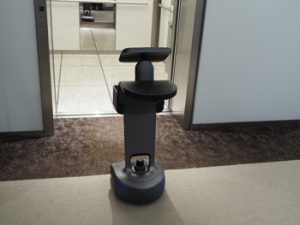Launch of Smart City Digital Implementation Community NTT Com

NTT Communications (NTT Com) is launching the “Smart City Digital Implementation Community” to realize smart cities.
One of the key points of smart cities is to advance the digital infrastructure of buildings and facilities and promote data utilization.
Data may be shared within a building or between buildings, but a smart city will be formed by linking buildings in a city.
Hiroki Tsukamoto, head of the Smart City Promotion Office in the company’s Smart World Business Department, said, “We aim to create green and sustainable smart buildings. Conventional buildings were rebuilt when they deteriorated over time, but by utilizing the power of digital technology, we will realize buildings that continue to evolve even after completion, improving customer experience and green measures.”

ロボットによるビル内の案内(Robots providing guidance within buildings)
There are three main issues surrounding smart buildings. In other words, “digital architecture is individually optimized for each building,” “industry stakeholders are divided in the design and construction process, and smartification considerations are a delayed process,” and “the business structure of building construction is mainly focused on the completion of the building.”
“In addition to these challenges, the shortage of human resources is making matters worse. Furthermore, the construction industry is subject to upper limits on working hours, and the weak yen has caused construction materials to soar in unimaginable ways. In order to reduce the cost of building construction, budgets for the digital domain are often cut, resulting in a trend that runs counter to smartification,” said Director Tsukamoto.
To solve the issues surrounding smart buildings, it is first necessary to create best practices for digital implementation, rather than optimizing it for each building.
It will also be necessary to optimize digital utilization from the planning and concept stages to operation in a seamless manner, and to continue evolving throughout the entire lifespan of a building even after it is completed.
The “Smart City Digital Implementation Community” was launched to create such a trend.
The community brings together industry experts from industry, government, and academia to hold workshops and study sessions to promote digital implementation. The community’s efforts will be expanded to development fields involving NTT Com and other companies.
The community was launched with a team of 20 people and will continue to grow.
Professor Hiroshi Esaki of the University of Tokyo Graduate School, who is the representative of the University of Tokyo Green ICT Project and is involved in the community, said, “To create infrastructure that is friendly to the global environment, we need to create value by using existing assets and resources as little as possible, and to continue to create value throughout the life of the building. To achieve this, a vision based on advanced technology by industry, government, and academia is essential. I want to make this a community that supports these efforts.”
NTT Com is also promoting MSI (Master System Integrator), which centralizes digital planning and implementation. Smart buildings require a wide range of specialized knowledge.
For example, it is necessary to deal with multiple stakeholders, such as building facilities, elevators, electrical systems, and mechanical systems. In addition, collaboration with building owners and design offices is essential.
Tsukamoto said, “Smart buildings require collaboration with stakeholders and a consistent approach from the planning and concept stages onwards, and MSI provides unified support for such efforts. MSI is already ahead of the competition in Europe and the United States, but we would like to take the lead in promoting the technology in Japan”.
※Translating Japanese articles into English with AI
